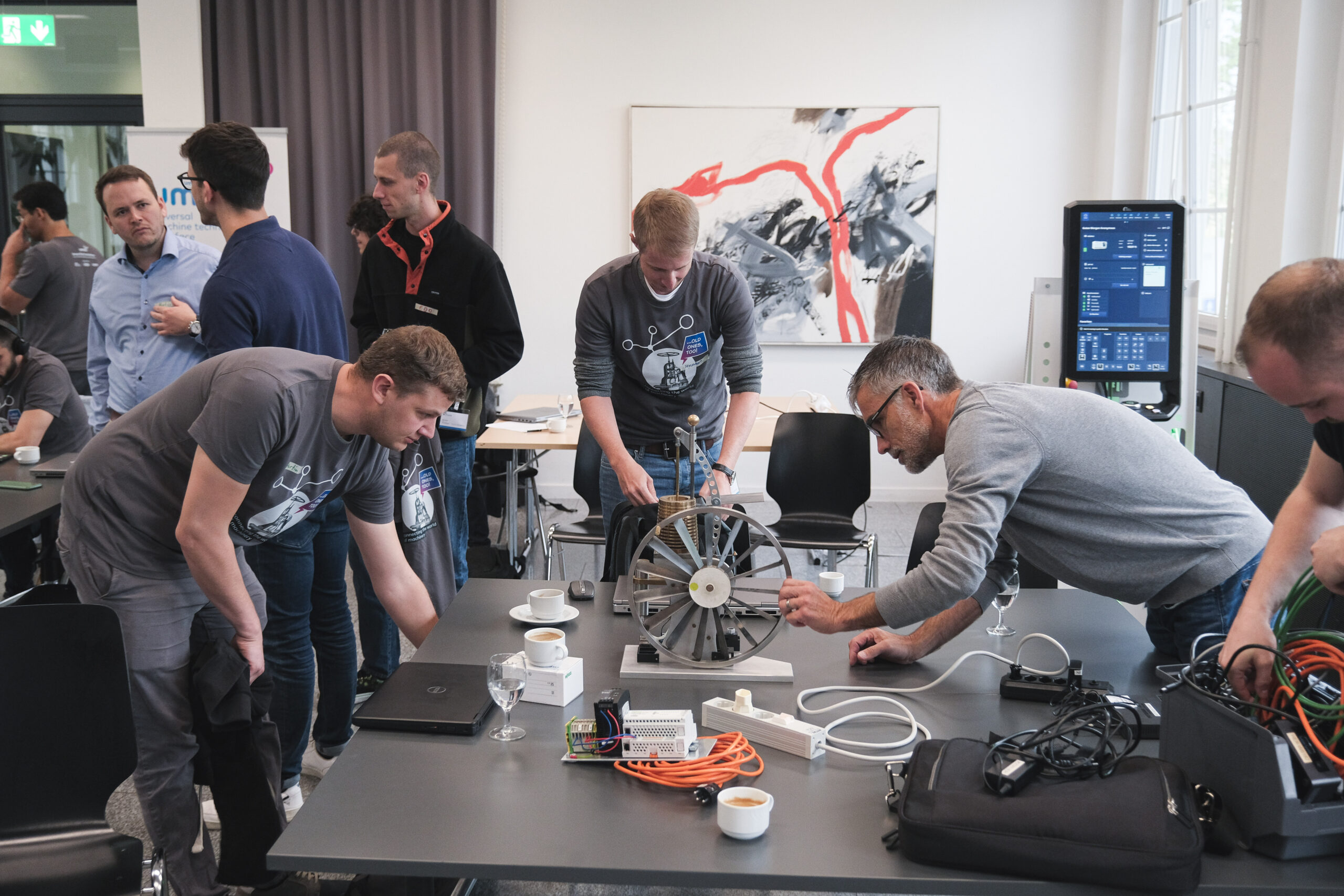How Predictive Maintenance Is Improving Manufacturing

Predictive maintenance uses data to enhance the performance of manufacturing equipment. It involves collecting information from sensors in the machinery, analyzing this data to detect any issues, and using predictive models to anticipate potential problems.
In contrast to traditional maintenance methods, which often rely on scheduled repairs or fixing issues as they come up, PdM continuously monitors equipment health and predicts failures before they occur. This approach helps improve efficiency and extend the life of industrial assets.
Why is Predictive Maintenance Needed in Manufacturing Operations
Traditionally, industries have relied on two main approaches to maintenance: reactive and preventive. Reactive maintenance means fixing equipment after it breaks down, while preventive maintenance involves scheduled checks to avoid unexpected failures.
Reactive maintenance can lead to unplanned downtime and costly repairs, especially for older machines. Preventive maintenance helps reduce downtime but often results in unnecessary costs for equipment in good condition.
Predictive maintenance offers a better approach by using data to track equipment performance and health in real-time. By analyzing this data, businesses can identify potential problems, predict when equipment might fail, and plan maintenance accordingly. This data-driven approach eliminates guesswork and allows for more efficient maintenance planning.
How to implement predictive maintenance in manufacturing
1. Analyze Your Current Data
Before diving into predictive maintenance, understand your current situation. Carefully review past downtime incidents, noting their frequency and impact. Check for equipment defects, categorizing them and calculating associated costs. Finally, assess your past maintenance efforts, distinguishing between reactive and preventive actions for each asset.
2. Identify Priority Assets
Use the insights to figure out which assets are most important for your operations. Next, install condition-monitoring devices and IoT sensors on these key pieces of equipment. You don’t need to use every device available—starting with essentials like a thermal imagery camera, vibration meter, and oil measurement tools is a good approach.
3. Start a Pilot Project
Rather than jumping into a large and expensive predictive maintenance (PdM) project, start small. Launch a pilot project with one or two of your most critical assets and machinery to test and refine your approach.
4. Have a Detailed Plan Ahead
It is essential to have a clear vision of your objectives. Develop a detailed implementation plan, including a realistic budget and timeline. Define the goals of your PdM project, make them measurable, and regularly track progress to ensure successful outcomes.
Benefits of Predictive Maintenance in Manufacturing
1. Achieve Better ROI
Predictive maintenance (PdM) offers a significant return on investment (ROI). By using PdM, you avoid unnecessary regular maintenance tasks, cutting down on maintenance costs. PdM also reduces both unplanned and planned downtime. Repairs are quicker since data scientists know exactly where to look for issues. Additionally, manufacturers can order replacement parts or new machinery ahead of time, reducing delays and saving on stocking costs.
2. Extend the Lifespan of Machinery
According to research by Deloitte, PdM can increase machine uptime by upto 20%. The system monitors equipment performance, detecting issues before they cause serious damage. As a result, machinery lasts longer because it operates to its full lifespan instead of being replaced regularly as in preventive maintenance.
3. Improve Operator Safety
Early warnings about equipment issues can help prevent injuries in manufacturing. By analyzing big data and monitoring machinery, predictive maintenance can spot safety risks and dangerous conditions, making the workplace safer.
4. Reduce Waste
Manufacturers can boost their profits by cutting down on waste. When equipment starts to wear out, it often leads to more waste in areas like materials, energy, machine use, and worker time. PdM can spot these problems before they become serious.
5. Enhance Performance
Predictive maintenance lowers both repair time and the frequency of repairs. This makes manufacturing operations more efficient over time, improving factory conditions and reducing equipment breakdowns.
6. Protect Assets
During equipment repairs, there’s a risk of impacting other parts of the machine. Predictive Maintenance (PdM) helps identify any unusual behavior after a repair, allowing you to address issues early and protect your assets.
Use Cases of Predictive Maintenance
Predictive maintenance is essential for manufacturers aiming to keep their operations running smoothly and avoid costly downtime. Here are some common ways predictive maintenance is used in manufacturing:
1. Optimizing Equipment Life
By continuously monitoring equipment conditions, predictive maintenance helps extend the lifespan of expensive machinery. For example, automotive plants use it to track the health of robotic arms, preventing unexpected breakdowns and maximizing productivity.
2. Reducing Maintenance Costs
Predictive maintenance helps lower costs by eliminating the need for routine maintenance activities. For instance, a chemical processing plant can use predictive maintenance to schedule maintenance based on actual equipment conditions, reducing unnecessary service costs and directing resources where they are most needed.
3. Improving Safety
Identifying potential equipment failures before they happen helps create a safer work environment. In the oil and gas industry, monitoring drilling equipment for signs of wear and tear can prevent accidents and protect workers.
4. Enhancing Product Quality
Maintaining equipment in top condition leads to better product quality. Pharmaceutical manufacturers can use predictive maintenance to ensure consistent and high-quality output, meeting strict industry standards.
Examples of Predictive Maintenance in Manufacturing
1. General Motors
General Motors (GM) has adopted predictive maintenance (PdM) by using IoT sensors and artificial intelligence (AI) to keep an eye on their assembly line robots. This system helps GM catch early signs of wear and tear on their equipment, which prevents unexpected breakdowns and extends the lifespan of their machines. For instance, at GM’s Saginaw Metal Casting Operations, this approach has cut down unplanned downtime by 15% and saved around $20 million a year on maintenance. It has also enhanced production efficiency and safety.
2. Mondi
Mondi, a company that makes paper and packaging products, uses predictive maintenance to avoid unplanned shutdowns of its plastic extruder machine at their Munich plant. One breakdown could cost up to €50,000 in cleanup and lost revenue. By implementing PdM, Mondi has managed to save between €50,000 and €80,000, mainly through lower operating costs and reduced waste.
Closing Thoughts
Predictive maintenance is more than just a trend; it’s a practical solution for improving manufacturing efficiency, safety, and cost-effectiveness. By leveraging data to anticipate equipment issues before they happen, manufacturers can minimize downtime, extend the life of their machinery, and enhance overall performance. Implementing predictive maintenance may require some initial effort, but the long-term benefits make it a worthwhile investment for any forward-thinking manufacturing operation.
Author bio:
Lindsey Walker is the marketing manager for NEXGEN, a Sacramento-based industry leader in designing advanced computerized maintenance management systems and asset management software tools for utilities, facilities, public works, manufacturing, and fleet industries. In her free time, Lindsey enjoys travelling and reading, which allows her to gain new perspectives and inspiration for her work. She is committed to creating content that connects well with her readers, enhancing their digital experiences.




